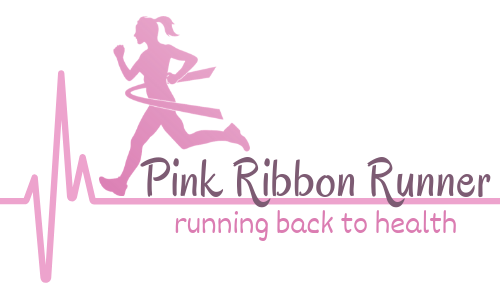Running with a Heart Rate Monitor – A Beginner’s Guide
Running with a heart rate monitor is an effective and safer way to train. If you are just learning to run, want to run faster, run further or perform to your personal best, monitoring your heart rate is a great tool to use in training. But before you get started, there are some things you should know about finding that perfect heart rate zone to train in.
This post contains affiliate links. As an Amazon Associate, I earn from qualifying purchases.
I was first introduced to heart rate training after I purchased my first running watch. I bought myself a Garmin watch that allowed me to set personal heart rate zones.
But, I didn’t fully understand how helpful this was until I started coaching my husband to qualify for the Boston Marathon. That is when I learned and really understood the value of running by heart rate.
He did qualify for the Boston Marathon, by the way. I am very proud of him.

Why do runners train by heart rate?
Many runners train by heart rate because it is more effective and a safer way to train.
Your heart can tell you how hard to push yourself to get the improvements you are looking for. And it can tell you when you are pushing too hard to the point where you may hurt yourself.
If you don’t push hard enough, your heart and muscles aren’t working to improve on maximum efficiency. And, you may struggle to run faster or further. You may have a harder time getting that personal best time at your next race.
But, you also don’t want to push too hard. Pushing too hard can damage your heart and your body. Runners who push too hard wind up with overtraining injuries, which are no fun.
So, you want to achieve the ideal balance between working hard enough to get maximum benefits from your runs and workouts, but not so hard as to over-train.
And one tool you can use to find this ideal balance is monitoring your heart rate during your runs.
What happens to my heart when I run?
Your heart is basically one big muscle that works to pump blood out to the body. That is it. It is a simple organ, not very fancy, but it is vital to your life and health.
When you run, you work this muscle. Any muscle that works hard will get stronger. So, running helps your heart get stronger. A stronger heart can contract better and pump blood more easily out to the rest of your body. This is one reason why cardio exercise is so important.
But, wait, there is more…
Your heart chambers and surrounding blood vessels widen in diameter. This allows your heart to fill with more blood. So, with each beat or pump, it can push out more blood. Thus, your heart can work more efficiently by pumping out a greater volume of blood with each beat. This means that your heart doesn’t have to work as hard. It also means that you will have lower blood pressure.
Because your heart becomes more efficient at pumping blood, it doesn’t have to beat as often to do the same job. Thus, your resting heart rate gets slower.
As your heart gets stronger, it also grows more of its own blood vessels, called capillarization, to supply itself with more nutrients so that it can work harder for you.
All these things are a good thing. They help keep you and your heart healthy. It makes you more fit.
But you can push it too far.
What happens to my heart if I over-train?
If you over do your training and push too hard, your heart can’t keep up. It starts to pump faster to get blood out to your body. But it isn’t allowing the blood to properly fill up.
Thus, it is beating faster but only sending out small amounts of blood each time. Your body keeps saying it isn’t getting enough blood, oxygen and nutrients, so it tells your heart to beat faster.
So your heart beats even faster, sending out smaller amounts of blood that aren’t really feeding your working muscles.
And if you starve your muscles, including your heart muscle, while they are trying to do the work, they will not be happy. Your muscles will be delayed in getting stronger without the nutrients and oxygen they need. And they may even become damaged or weaker.
Over time, your overworked heart tissues may scar, not contract properly and lead to rhythm problems.
Chronic overtraining can also cause the blood vessels in your larger arteries to harden or even calcify. This can lead to high blood pressure and further damage to your heart.
Endurance athletes, such as ultramarathoners have five times the risk for developing atrial fibrillation, which is a heart rhythm abnormality.
So, while some exercise is great for health, too much is not a good thing. Keeping it in moderation … in that sweet zone of balance … is ideal. Heart rate training can help you do this.

What should my heart rate be?
For the average healthy person, resting heart rate is usually 60 – 100 beats per minute. However, there are so many influences on heart rate, such as stress, health status, medications, and fitness, to name a few.
The best time to check your resting heart rate is first thing in the morning before you even sit up in bed.
Athletes who have trained appropriately can have resting heart rates as low as 40 beats per minute.
If you are overweight or have health issues, you should consult with your doctor about starting an exercise program, especially if your resting heart rate is outside of the normal range.
What should my heart rate be when working out?
The American Heart Association (AHA) advise that people aim to reach a TARGET HEART RATE of between 50% and 85% of maximum during exercise.
If you are just starting out with running or an exercise program, you should aim for the lower end at about 50% of maximum.
What is my maximum heart rate?
There are a few ways to calculate out your maximum heart rate.
AHA calculates maximum heart rate based on your age. It is an easy formula to use. For a beginner runner, it is a good place to start.
For an average healthy person, AHA says your maximum heart rate should be 220 beats per minute minus your age. So if you are 40 years old, that would calculate out to be 180 beats per minute (220 – 40).

What is an unhealthy heart rate when exercising?
So, how do you know when you are pushing yourself too hard and your heart rate is unhealthy?
Well, the obvious answer to that question is to check your pulse. Some fitness trackers have built in heart rate monitors that can be set to alert you when your heart rate is getting too high. You can also purchase separate heart rate monitors for this purpose.
But there are other clues to tell you when your body is working too hard.
You may experience chest tightness or difficulty breathing. It might feel like you just can’t catch your breath.
If you feel chest pain, then it is definitely time to stop, assess and seek medical help if it isn’t subsiding by just stopping your workout.
But there is a simple way to tell even sooner that all this. You should be able to talk while running, but not sing. If you can’t string together a couple of sentences without gasping for breath, then you are running too fast. It is time to slow down and check in with what your heart is doing.
You should be able to talk while running.
What heart rate zone should I run in?
There is a lot of science behind training by heart rate. Depending on what your goal is, either overall or for a specific workout, there are heart rate zones that can help you achieve success for your efforts.
There are fat burning zones and zones that will help you increase your VO2 Max. There are zones for easy running and zones for faster, threshold running. It all depends on what you are trying to achieve. Let’s look at these 5 zones.
Heart Rate Zone 1
Zone 1 is a very easy intensity. For running, this would be your warm up run before increasing intensity. It would also be your recovery run the day after a harder workout. This zone gets your blood flowing, but doesn’t get your heart rate or breathing up very much. And that is the point.
This zone aims to keep your heart rate at about 50 to 60% of maximum.
Zone 1 is the Recovery Zone
Heart Rate Zone 2
Zone 2 is a light intensity. This is where you want most of your runs to be. It is an easy run. This is where you want your long slow distance (LSD) run to be. This zone keeps your heart rate at 60 to 70% of maximum. You should easily be able to carry on a conversation with your best friend.
Zone 2 is the Fat Burning Zone
Heart Rate Zone 3
Zone 3 is a moderate level of intensity. Keep your heart rate at about 70 to 80% of maximum. This is a little harder than an easy run. It should feel ‘comfortably hard’. You should still be able to talk, but your sentences might be interrupted with the occasional needed breath. These are your tempo and threshold runs.
Zone 3 is the Aerobic Threshold Zone
to build fitness
Heart Rate Zone 4
Zone 4 is getting harder, at 80 to 90% of maximum heart rate. This should feel difficult, but acheivable. Running workouts in zone 4 will be for increasing your speed and oxygen carrying capacity. This is usually a 5 km race pace. You likely can’t talk in sentences at this pace. Maybe just a few words at a time between breaths.
Zone 4 is the Anaerobic Threshold Zone
to build athletic performance
Heart Rate Zone 5
Zone 5 is very hard. Very few runs should be done at this level, as you are working in the 90 to 100% of maximum range. You shouldn’t be exercising in this zone very often. If you are new to running, you should avoid training this hard. You don’t need to be in this zone to improve.
If you do want to train in zone 5, keep it short. Get in and get out. Use it like a HIIT (High Intensity Interval Training) workout.
Zone 5 is for sprint training
for peak performance in pro athletes.

What is the best heart rate watch for running?
Before a company called Mio came along, the best heart rate monitors available were those that used a strap that you wore around your chest. The chest straps were cumbersome and sometimes uncomfortable. They took a bit of getting use to running with them.
Then along came the optical sensors that you can wear on your wrist. At first these fitness watches were not all that accurate. But as the technology improved, so did the accuracy.
Mio seemed to have a good grasp on how this optical technology should work in a run watch. And in 2015, Garmin partnered with them to make the Forerunner 225 (discontinued), which was Garmin’s first wrist heart rate monitor.
Today, these wrist watches with heart rate monitors have only gotten better. Some heart rate watches have achieved a 95% accuracy level with a long battery life. These make training by heart rate much easier.
A good run watch with heart rate monitor for beginners is the Garmin Forerunner 45
While most runners have their watch preferences, a good entry level heart rate running watch is the Garmin Forerunner 45. This is one of my favorite watches, especially given the low price. It will even calculate your own personal heart rate zones after a few runs. The more you run, the more accurate it becomes. You can also set your own heart rate zones manually, if you prefer.

Garmin has other great run watches with heart rate monitors. It is the favorite brand of most runners. I highly recommend their watches.
What are the dangers of training with a heart rate monitor?
I talked about the pros of heart rate training. But what about the cons? Is there a down side to running with a heart rate monitor?
While training by heart rate can be an effective and safer way train, it isn’t perfect. You shouldn’t rely solely on heart rate to know how your body is responding to the workout. You also need to listen to your body and be aware of how you are feeling.
Heart rate monitors can be unreliable. While today’s technology is pretty good, there can still be inaccurate readings from time to time. If something doesn’t look right, then double check by taking your pulse and respiratory rate. Some heart rate monitors also have a lag and aren’t exactly in real time. Be aware of this. You may be getting slightly delayed information.
Your heart rate is also affected by other things that aren’t related to your workout. The outside temperature, dehydration, electrolyte status and your internal core temperature can all affect your heart rate. So, your target heart rate for a particular day or a particular workout should vary. Trust your instinct. If you aren’t feeling 100%, then slow it down and target a lower heart rate zone.
You need to be flexible and smart about training by heart rate.
Enjoy these other articles on running:
7 Things You Can Do Right Now To Run Faster
The Easy Run: Why & How to Train Slower
Runner’s Guide to Muscle Recovery
Essential Guide to Running with Your Dog










I had no idea of all the implications of training with a heart rate monitor. I recently starting doing so to try to burn more calories.
What a great post. I have been running with my husbands watch a couple of times and always think it’s interesting to see the numbers afterwards, but to be honest. I don’t know what’s good or bad, but this post gave me some clarity and I will for sure use his watch more often!
Totally agreed! it is essential to measure heart rate to meet your fitness goals. Thanks for sharing this!
There is so much great information here! I really love how you broke down the target heart rate and different zones. I have a Fitbit, but didn’t really understand all the science behind the heart rate number and why it matters so much.
great article about running with heart rate monitors. I actually have a built-in one on my fitness tracker which is cool
Great article! I learned a lot of new info about heart rate monitors! Congrats to your husband on qualifying for the Boston Marathon….that’s a big deal! 🙂 When I lived in MA, we would always stand along the marathon route and cheer on the runners. Such a fun and inspiring event!
Thank you. I hope to cheer him on in Boston one day. It keeps being cancelled due to the pandemic.
I never understood the importance of heart rate training until I got more into racing. Really well written post with helpful information to make smarter running choices.
I’ve started doing this and it’s a great way to train!
I’m not much of a runner, and I have never used a heart rate monitor, but I think I might need to try. This all makes so much sense. My smartwatch had my heart rate in “fatburn” mode the whole time I was teaching. I think it’s time for some healthier living. lol
Good for you! Yes, it is time for healthier living! 🙂
Hi and thanks for this interesting and detailed article. For me, I have to adjust psychologically to a body that is now in its 6th decade when my mind associates with being 30 or 40 years old. I agree with your last piece of advice that you have to be careful and not over-rely on the readings that a heart rate monitor gives but pay attention to what our body is telling us. We all know that the dangers of injury increase with age and I am sure that is true of the risk of injury from over-exercising or over-extending. Thanks and best regards, Andy
I’m a firm believer in heart rate watches but I had no idea professional athletes trained with the heart rate in mind. Great article!